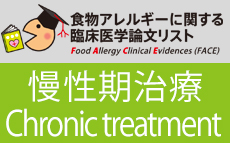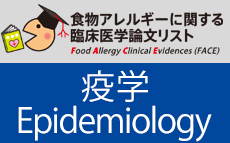Active or passive exposure to tobacco smoking and allergic rhinitis, allergic dermatitis, and food allergy in adults and children: a systematic review and meta-analysis
更新日:2016年10月21日
| Author: | Saulyte J, Regueira C, Montes-Martínez A, Khudyakov P, Takkouche B. |
|---|---|
| Title: | Active or passive exposure to tobacco smoking and allergic rhinitis, allergic dermatitis, and food allergy in adults and children: a systematic review and meta-analysis. |
| Citation: | PLoS Med. 2014 Mar 11;11(3):e1001611. |
| URL: | https://pubmed.ncbi.nlm.nih.gov/24618794/ |
| Abstract: | BACKGROUND: Allergic rhinitis, allergic dermatitis, and food allergy are extremely common diseases, especially among children, and are frequently associated to each other and to asthma. Smoking is a potential risk factor for these conditions, but so far, results from individual studies have been conflicting. The objective of this study was to examine the evidence for an association between active smoking (AS) or passive exposure to secondhand smoke and allergic conditions. METHODS AND FINDINGS: We retrieved studies published in any language up to June 30th, 2013 by systematically searching Medline, Embase, the five regional bibliographic databases of the World Health Organization, and ISI-Proceedings databases, by manually examining the references of the original articles and reviews retrieved, and by establishing personal contact with clinical researchers. We included cohort, case-control, and cross-sectional studies reporting odds ratio (OR) or relative risk (RR) estimates and confidence intervals of smoking and allergic conditions, first among the general population and then among children. We retrieved 97 studies on allergic rhinitis, 91 on allergic dermatitis, and eight on food allergy published in 139 different articles. When all studies were analyzed together (showing random effects model results and pooled ORs expressed as RR), allergic rhinitis was not associated with active smoking (pooled RR, 1.02 [95% CI 0.92-1.15]), but was associated with passive smoking (pooled RR 1.10 [95% CI 1.06-1.15]). Allergic dermatitis was associated with both active (pooled RR, 1.21 [95% CI 1.14-1.29]) and passive smoking (pooled RR, 1.07 [95% CI 1.03-1.12]). In children and adolescent, allergic rhinitis was associated with active (pooled RR, 1.40 (95% CI 1.24-1.59) and passive smoking (pooled RR, 1.09 [95% CI 1.04-1.14]). Allergic dermatitis was associated with active (pooled RR, 1.36 [95% CI 1.17-1.46]) and passive smoking (pooled RR, 1.06 [95% CI 1.01-1.11]). Food allergy was associated with SHS (1.43 [1.12-1.83]) when cohort studies only were examined, but not when all studies were combined. The findings are limited by the potential for confounding and bias given that most of the individual studies used a cross-sectional design. Furthermore, the studies showed a high degree of heterogeneity and the exposure and outcome measures were assessed by self-report, which may increase the potential for misclassification. CONCLUSIONS: We observed very modest associations between smoking and some allergic diseases among adults. Among children and adolescents, both active and passive exposure to SHS were associated with a modest increased risk for allergic diseases, and passive smoking was associated with an increased risk for food allergy. Additional studies with detailed measurement of exposure and better case definition are needed to further explore the role of smoking in allergic diseases |
| 邦文タイトル: | 準備中 |
| 一般向け要約 | 準備中 |
| 専門医コメント | 準備中 |


